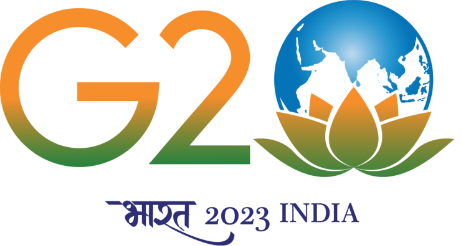Cracking a 2,500-year-old Sanskrit Puzzle
Rishi Rajpopat, a former PhD student at Cambridge University, recently made a breakthrough in solving a grammatical challenge in Sanskrit that has stymied scholars for over two millennia, since it was first introduced by Pāṇini, a revered scholar and grammarian who was believed to have lived in ancient India around the 6th to 4th century BC. In excerpts from an interview, Rishi speaks about his interest in linguistics, his approach to solving Pāṇini’s puzzle, and the implications of the finding.

How did you become interested in linguistics?
I’ve always had an interest in languages, going as far back as primary school. I grew up in Mumbai, which is quite multilingual. I speak Gujarati at home, and you pick up Hindi living there. With Marathi, I had to invest more effort. I went to an English medium school, and I read a lot in English and other languages. This exposure to languages in diverse contexts, within and outside school and home, got me really intrigued. I also used to observe that people with different kinds of linguistic portfolios could predictably play certain social or economic roles in society; their linguistic profiles were impacting their socioeconomic status and also vice versa. I found all these things quite interesting.
In class eight, I had the opportunity to pick between Sanskrit and Hindi, and long story short, my parents picked Sanskrit because you can get full marks in it. So, it’s almost by accident that I came to Sanskrit. When I started studying Sanskrit, I began to realise that it was a very enjoyable process. Not only was it rewarding in terms of marks, which became a very secondary concern for me soon after I began, but it was quite enjoyable and engaging. I thought that in some capacity or the other, I would remain in touch with Sanskrit irrespective of what I would end up doing later in life.
When I was about to finish class 12, I decided that I was going to do a bachelor’s in economics and not Sanskrit, for the simple reason that you cannot make a living with a bachelor’s in Sanskrit. But outside of college, I once happened to run into someone who was a friend of a friend at a Navratri function, who told me that they had been going to a Pāṇinian grammar class, which was being taught at no charge by an erudite retired woman professor. I jumped onto the opportunity and began to attend those classes. The content was stimulating, it got me thinking. With some breaks, I studied Pāṇini’s grammar for two-and-a-half to three years over the entire stretch of my undergrad.
Why is Pāṇini’s system of grammar or language machine so important?
Pāṇini’s grammar is important because it is unique and it remains unrivalled to this very day. This is not to say that Prakrit grammars have not been written in the tradition that they have. Other Sanskrit grammars have also been written in the tradition, but Pāṇini’s grammar functions like a machine, whereas many of these other grammars don’t even attempt to.
Until very recently, we did think of Pāṇini’s grammar as some sort of machine, but we didn’t really have the algorithm. And that’s precisely what I found. It is that ability to self-regulate and self-sufficiently function that makes Pāṇini’s grammar an intellectual feat of unparalleled proportions. That’s what makes it stand out.
Why has the problem of rule conflicts been intractable for over 2,500 years?
It has a lot to do with not just being intractable, but in the manner in which scholars have perceived it. Pāṇini wrote these 4,000 rules that are thought to be able to help one derive any word and subsequently any sentence of Sanskrit. The idea is that you take a base or a root, and add a suffix to it, and then step-by-step, you apply one rule at a time. The idea is that the grammar should be able to give you the grammatically correct output automatically without the need for human intervention or any subjective decisions. So, the expectation is that it is a consistent objective grammar.
What happens is that sometimes during these derivations, two rules become simultaneously applicable and the vexing question is, which of these two rules must we choose? Put differently, in this so-called conflict between rules, which of these two rules wins?
Pāṇini has taught us only one rule in his grammar, which is 1.4.2, to address this issue. The tradition, starting with Kātyāyana, the first scholar to comment on Pāṇini’s grammar, misinterpreted this rule. He knew of two interpretations of this rule, and he picked the wrong one actually, and so did his successors. A lot of scholars accepted this misinterpretation, and they thought that rere was nothing to worry about. But of course, this misinterpretation gave them lots of incorrect grammatical forms for which they wrote even more meta rules apart from that one meta rule that Pāṇini has taught to resolve rule conflict. They wrote even more to supplement those, in the hope that they’d be able to solve the problems arising from their interpretation of 1.4.2. But what they ended up doing is only aggravating an already troubling problem. There was lesser and lesser clarity as time passed.

What is the solution that you have proposed to address this rule conflict?
I’m going to give a very simplified version. I’m going to focus on one word, Param. Param means that which comes after. But in what context? The tradition understood Param as that which comes as after in the serial order of the rules of Aṣṭādhyāyī. Rule number X plus N comes after rule number X, and therefore rule number X plus N wins. So, rule number 25 defeats rule number 24, and rule number 24 defeats rule number 20, and so on. However, that has given us lots of incorrect answers.
The actual meaning of Param is that which comes after, going from left to right. When you write things down – because in Sanskrit, we write things from right to left – it is that which comes after, from left to right within the word. For example, the rule that applies to the suffix comes to the right-hand side of the rule that applies to the base or the root. So, it’s the right-hand side of the rule that prevails. With that interpretation, we get grammatically correct answers. But this is not the full solution, please read my full thesis available online.
Experts have suggested that your solution to Pāṇini’s grammatical puzzle will help us teach grammar to computers. Why is this important?
It’s not as though no one has tried to teach parts of the Aṣṭādhyāyī to computers. Attempts have been made. Now that we have this very elegant algorithm, which runs the whole thing quite well, we can teach the whole grammar in its entirety, in its most authentic Pāṇinian form. We can basically use the algorithm to teach the grammar the way Pāṇini wants it to function to the computers. Of course, there would have to be some kind of human interaction; the speaker has to convey to the computer what he or she intends to say. But once you add that to the rules of Pāṇini’s grammar in its entirety, you can help the computer produce human speech the way Pāṇini would like for his machine to be able to do. And I think that is a major milestone, not just in the intellectual history of our country, of our civilization, but also in, more generally speaking, the history of human interaction with machines.
I am not a computational linguist; it will be really great if computational linguists could understand the gist of what I have found and tell us more about the potential of this. I’ve read several posts by computational linguists over the last couple of days about what this means, and how it will help us. But I’m still trying to wrap my head around it and it’s very heartening to see that people have already figured out how this will be helpful. I’m eager to learn more about exactly what they’re proposing and building on what I’ve found.
What would be your one piece of advice for students and young scholars?
Education really is about independent thinking. Independent thinking is so crucial because we can do so much for our country if we learn to produce original solutions. What really helps make a contribution that can potentially bring about change or transformation is original ideas. Lateral thinking can help produce original ideas and to be able to think laterally, you have to think independently. Group thinking is the enemy of innovation. We should think of new ways to help students think independently, which would only help our country.
What are your future plans?
I’m hoping to cherish this moment right now. I am [also] working on an interesting encyclopaedia of theology at St Andrews University in Scotland. In terms of research, I have a general interest in the Indo-Aryan language family: Hindi, Marathi, Bengali, Punjabi – these are all daughters of Sanskrit. What I’m interested in is how language evolved in this part of the world, starting from Sanskrit. That’s a broad field which is of significant interest to me. Apart from that, I find comparative Indo-European linguistics very interesting. I’ve only grown interested in that relatively recently, so there’s a long way to go. I’m learning Greek right now; at Cambridge, I was learning Persian.
The good part about trying to answer some of these questions is that the process of it is in itself so rewarding and so enjoyable. I can just revel in the act of learning, and it’s such a privilege to have found something that satisfies my intellectual appetite so much. Going forward, I really hope that we are able to devise an education system that enables each student to find what really captures their imagination.

